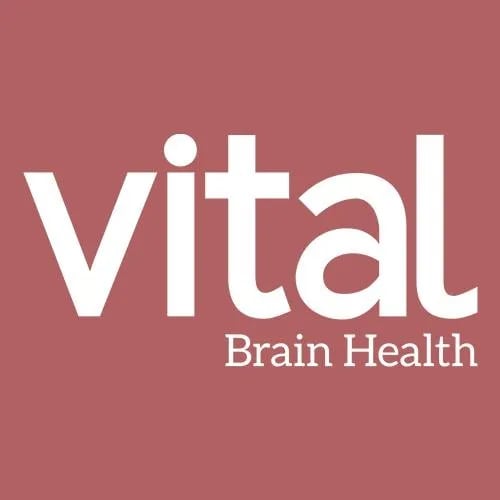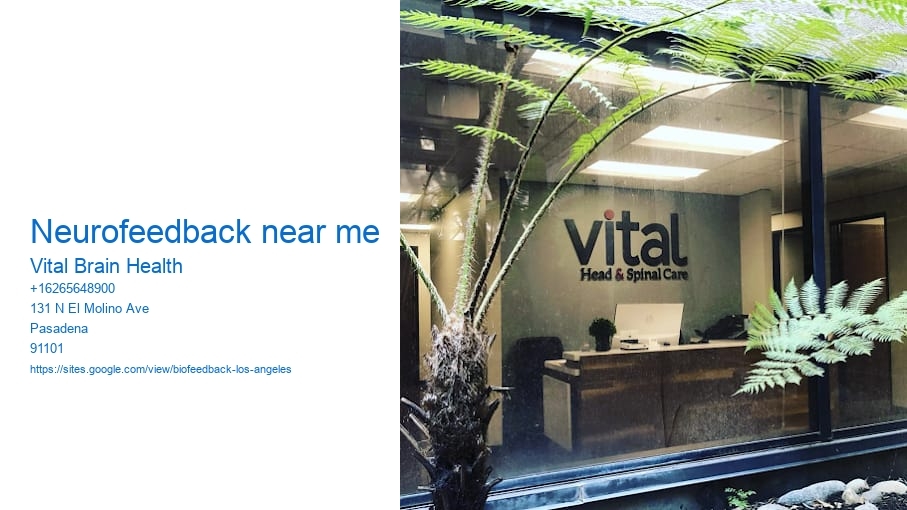Benefits of Neurofeedback Therapy
Neurofeedback therapy, a cutting-edge approach in the realm of mental health and wellness, is gaining significant attention for its potential benefits. Biofeedback Los Angeles . If youre searching for "neurofeedback near me," youre likely interested in discovering how this innovative therapy can positively impact your life. This non-invasive technique offers a host of advantages, making it an attractive option for those seeking alternative or complementary treatments to traditional methods.
At its core, neurofeedback therapy is a form of biofeedback that focuses on training the brain to improve its function. It involves monitoring brainwave activity in real-time and providing feedback to the individual, helping them recognize and alter patterns associated with various mental and emotional states. This process can enhance self-regulation and promote optimal brain performance.
One of the primary benefits of neurofeedback therapy is its potential to improve mental health conditions such as anxiety, depression, ADHD, and PTSD. By helping individuals recognize and regulate their brainwave patterns, neurofeedback can lead to reductions in symptoms and improvements in overall emotional well-being. Many people report feeling calmer, more focused, and emotionally balanced after undergoing sessions.
Moreover, neurofeedback therapy is praised for its non-invasive nature. Los Angeles wellness neurofeedback Unlike medications that can come with side effects, neurofeedback is a drug-free approach that focuses on harnessing the brains natural ability to adapt and learn. This makes it a suitable option for individuals who prefer to avoid pharmaceuticals or who have not found success with traditional treatments.
Another significant advantage of neurofeedback is its potential to enhance cognitive performance. Many individuals, including athletes and professionals, turn to neurofeedback to sharpen their focus, improve memory, and boost creativity. By optimizing brain function, individuals may experience heightened mental clarity and improved problem-solving skills, contributing to enhanced performance in various aspects of life.
Neurofeedback therapy also encourages long-term change. Unlike some treatments that provide temporary relief, neurofeedback aims to create lasting improvements by teaching the brain to operate more efficiently. This can lead to sustained benefits, as individuals continue to utilize the skills and self-awareness gained through therapy in their daily lives.

In conclusion, if youre exploring "neurofeedback near me," youre considering a therapy that offers a wealth of benefits. From improving mental health conditions to enhancing cognitive performance and promoting long-term well-being, neurofeedback therapy presents a promising avenue for those seeking holistic, non-invasive solutions. As awareness and research in this field continue to grow, more people are likely to experience the transformative effects of this innovative therapy.
How to Choose a Neurofeedback Provider
Choosing a neurofeedback provider is an important decision that can significantly impact your mental well-being. Neurofeedback, a form of biofeedback, is a non-invasive therapy that aims to train the brain to function more efficiently, often used to address issues such as anxiety, ADHD, depression, and PTSD. When searching for a neurofeedback provider near you, several key factors should be considered to ensure you receive the best possible care.
First, consider the qualifications and experience of the provider. Neurofeedback is a specialized field, and its crucial to select a practitioner who is not only certified but also has substantial experience in administering neurofeedback therapy. Look for providers who are board-certified by recognized organizations such as the Biofeedback Certification International Alliance (BCIA). This certification indicates that the provider has met specific educational and training standards.
Next, inquire about the providers approach and methodologies. There are different types of neurofeedback training systems and protocols, and its essential to understand which one the provider uses and why. Some common types include QEEG-guided neurofeedback, LENS, and HEG. A reputable provider should be able to explain their choice of method and tailor it to meet your individual needs.

Additionally, consider the providers track record and patient testimonials.
At Vital Brain Health we help with los angeles concentration therapy so you can smile a little more while finding balance in life
- At Vital Brain Health we help with pasadena ca emotional health therapy so you can smile a little more while finding balance in life
Its also important to evaluate the providers communication style and the level of comfort you feel during your interactions. A good provider should be able to explain the process in a clear and understandable way, answer any questions you may have, and make you feel comfortable and supported throughout the treatment process.
Finally, consider the logistical aspects such as location, availability, and cost. Choose a provider that is conveniently located to minimize travel time, and check if their schedule aligns with yours to ensure regular sessions can be maintained. Cost is another critical factor, as neurofeedback therapy can be a significant investment. Check whether the provider accepts insurance or offers payment plans to make the treatment more affordable.
In summary, choosing the right neurofeedback provider involves assessing qualifications, understanding methodologies, reviewing patient feedback, ensuring good communication, and considering logistical factors. By carefully evaluating these aspects, you can find a provider who meets your needs and supports your journey toward improved mental health.

What to Expect During a Neurofeedback Session
Neurofeedback is an intriguing therapeutic approach that has gained popularity in recent years for its non-invasive and drug-free method of addressing various neurological and psychological conditions. If you are considering neurofeedback therapy, you might be curious about what to expect during a typical session. Understanding the process can help demystify the experience and alleviate any apprehensions you might have.
A neurofeedback session typically begins with a consultation. During this initial meeting, a trained practitioner will discuss your medical history, specific concerns, and therapeutic goals. This conversation helps in tailoring the neurofeedback process to your individual needs. ADHD specialists Los Angeles CA Once the consultation is complete, you will be guided into a comfortable setting, often a quiet room with minimal distractions, to ensure a relaxed experience.
The session itself involves the use of electroencephalogram (EEG) technology to monitor brainwave activity. Small sensors are placed on your scalp to measure these brainwaves, which are then displayed on a computer screen. This real-time feedback is crucial, as it provides a visual representation of how your brain is functioning. The practitioner will guide you through various exercises, often incorporating visual or auditory stimuli, to help you learn how to regulate your brain activity.
During the session, you might be asked to watch a video, play a simple computer game, or listen to music. The goal is to engage your brain in a way that encourages the desired brainwave patterns. For example, if you are working on improving focus, the exercises will aim to enhance the specific brainwave frequencies associated with attention. The feedback you receive is immediate and helps your brain learn to self-regulate over time.
The duration of a neurofeedback session can vary, but it typically lasts between 30 to 60 minutes. It is often recommended to undergo multiple sessions to achieve the best results, as the brain requires consistent training to develop new patterns. The number of sessions needed can depend on the individual and the specific issues being addressed.
After the session, it is common to feel a sense of relaxation or mental clarity, though experiences can vary from person to person. Some individuals report feeling more focused or energetic, while others might experience temporary fatigue as their brain adjusts to the new training.
In summary, a neurofeedback session is a safe and engaging process that involves real-time monitoring of brainwave activity to promote self-regulation and improve cognitive function. By understanding the process and what to expect, you can approach your neurofeedback journey with confidence and curiosity, eager to explore the potential benefits this innovative therapy has to offer.
Cost and Insurance Coverage for Neurofeedback Therapy
Neurofeedback therapy has gained significant attention in recent years as an alternative treatment for a variety of neurological and psychological conditions. This innovative therapy utilizes real-time displays of brain activity to help individuals learn to regulate their brain function, potentially offering relief for issues such as ADHD, anxiety, depression, and even migraines. As its popularity has increased, so has the interest in understanding the costs associated with neurofeedback therapy and the extent to which insurance may cover these costs.
The cost of neurofeedback therapy can vary widely depending on several factors, including the location, expertise of the practitioner, and the number of sessions needed. On average, a single session can range from $75 to $150, and a typical course of treatment may require 20 to 40 sessions. This means that the total cost can quickly add up, making it a significant financial consideration for many individuals seeking treatment.
When it comes to insurance coverage, the landscape is somewhat complex and varies by provider. Some insurance companies may cover neurofeedback therapy under certain circumstances, such as when its deemed medically necessary for a specific condition. However, it is not universally covered, and policies can differ greatly. For instance, some insurance plans may cover it under mental health benefits or as part of a broader treatment plan, while others may not cover it at all, categorizing it as an experimental or alternative therapy.
Patients interested in neurofeedback therapy should begin by consulting with their insurance provider to understand their specific policy details. Its important to ask whether neurofeedback is covered, under what conditions, and what documentation is needed to support a claim. In some cases, a referral from a primary care doctor or a mental health professional may be required to validate the necessity of the treatment.
For those whose insurance does not cover neurofeedback therapy, some practitioners offer payment plans or sliding scale fees to make the sessions more affordable. Additionally, Flexible Spending Accounts (FSAs) or Health Savings Accounts (HSAs) can be used to pay for medical expenses like neurofeedback therapy, providing some financial relief.
In conclusion, while neurofeedback therapy presents a promising avenue for addressing various neurological and psychological conditions, the cost and insurance coverage can pose challenges. Potential patients should thoroughly investigate their insurance benefits, explore alternative payment options, and weigh the potential benefits of therapy against the financial investment. As awareness and acceptance of neurofeedback continue to grow, it is hoped that broader insurance coverage will follow, making this innovative treatment more accessible to those who could benefit from it.
